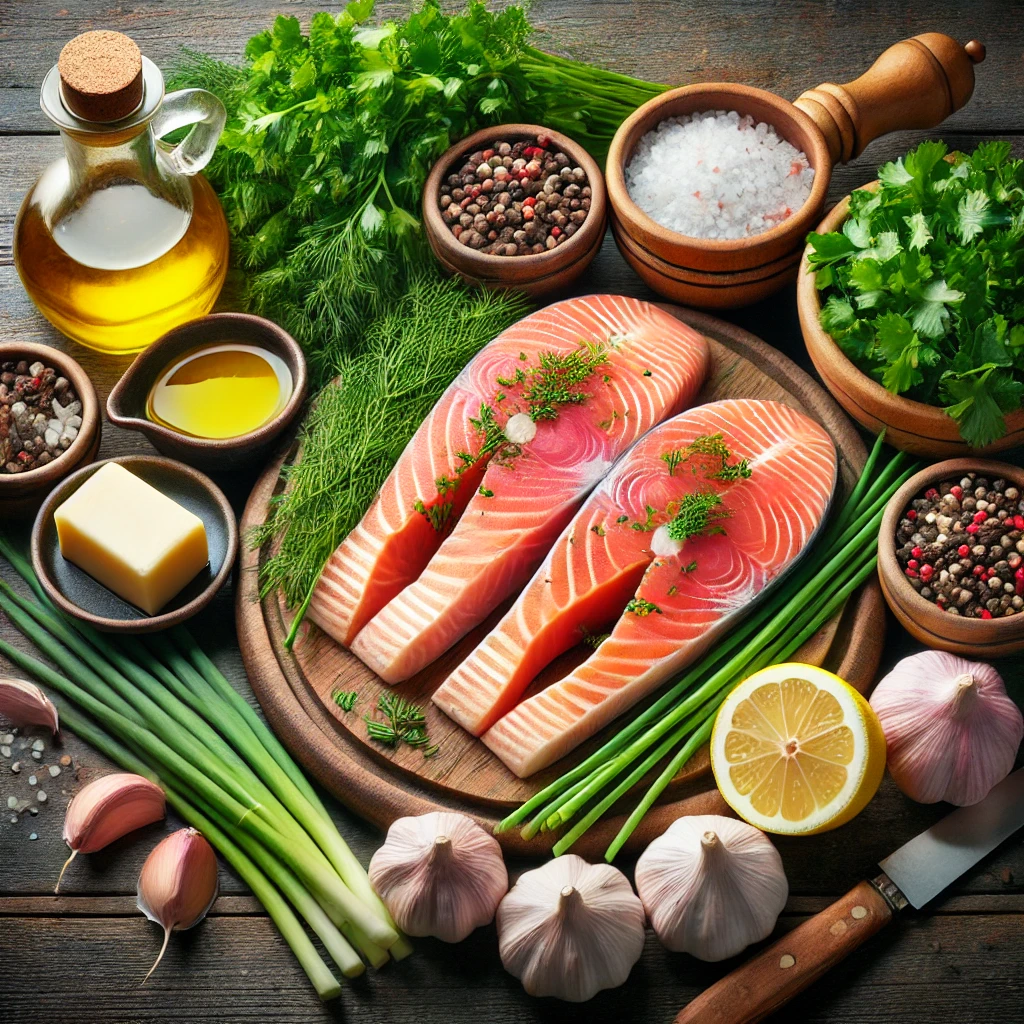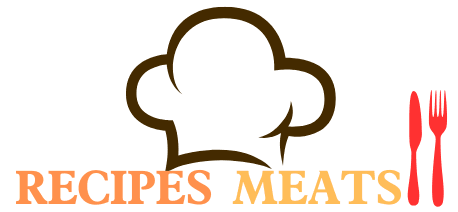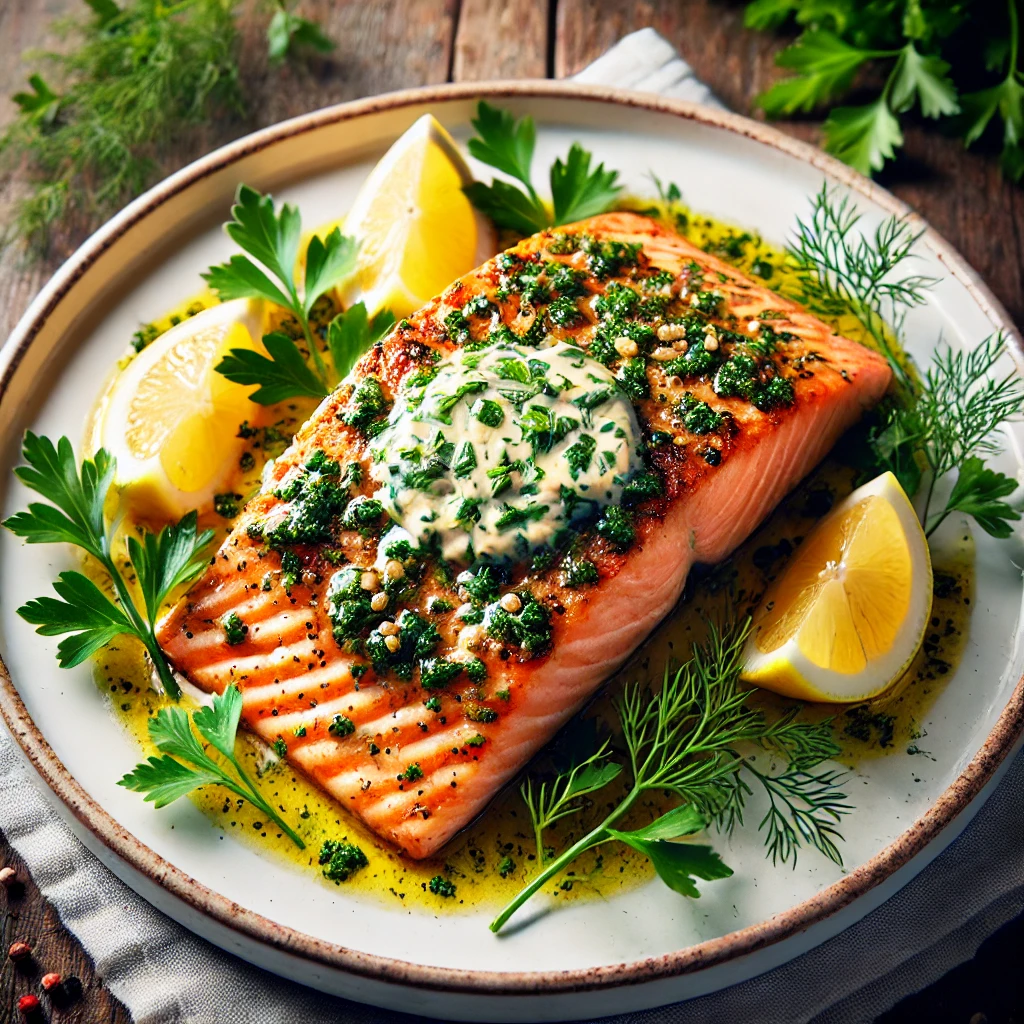Introduction to King Salmon
Let’s dive into the world of Chinook salmon, often dubbed the crown jewel of its species. These majestic fish are celebrated for their impressive size, rich flavor, and exceptional nutritional benefits. Curious why they’re called the “king”? It’s because they dominate the seafood world, beloved by chefs, anglers, and seafood enthusiasts alike.
If you’ve yet to savor the delights of Chinook salmon, you’re in for a treat. Its buttery texture and bold flavor make it a standout, whether grilled, baked, or smoked. Not only is it a feast for your taste buds, but it’s also a nutritional powerhouse. Ready to explore what makes this fish so extraordinary? Let’s get started!
The Habitat and Lifecycle of King Salmon
Where Do King Salmon Live?
King salmon are wanderers of the aquatic world. They inhabit the cold, pristine waters of the North Pacific Ocean, ranging from California to Alaska and across to parts of Asia. These fish love rivers and streams for spawning but spend most of their lives in the open ocean.
You might find them in places like the mighty Columbia River or the remote waters of Alaska. Their ability to adapt to both saltwater and freshwater environments is fascinating and a testament to their resilience.
The Migration Patterns of King Salmon
Migration? Yep, these fish are basically nature’s marathon swimmers. They travel thousands of miles during their lifecycle. Imagine crossing continents on foot—this is the aquatic equivalent! They’re born in freshwater streams, head out to the ocean to grow, and then return to their birthplace to spawn.
Scientists are still baffled by how king salmon find their way back. Some say it’s their sense of smell, others think it’s the Earth’s magnetic field. Either way, it’s pretty impressive!
Breeding and Spawning Characteristics
When it’s time to spawn, king salmon put on quite a show. They transform in color, turning shades of red and copper to attract mates. The females dig nests, known as redds, in riverbeds, where they lay their eggs.
The sad part? Most king salmon die after spawning. But their legacy lives on through their offspring and the nutrients they provide to the ecosystem.
Nutritional Benefits of King Salmon
Key Nutritional Facts About King Salmon
Did you know king salmon is a nutritional superstar? It’s packed with omega-3 fatty acids, which are great for your heart, brain, and joints. A single serving provides a generous dose of protein, essential vitamins like B12, and minerals such as selenium and potassium.
Here’s a quick breakdown:
- Protein: Supports muscle growth and repair.
- Omega-3s: Reduces inflammation and improves brain health.
- Vitamin D: Strengthens your bones and immune system.
Health Benefits of Including King Salmon in Your Diet
Why should king salmon be on your plate? Let me count the ways:
- Boosts Heart Health: Those omega-3s help keep your heart ticking smoothly.
- Enhances Brain Function: Want to stay sharp? Salmon has you covered.
- Supports Weight Management: High in protein, low in calories—it’s the perfect combo.
Eating king salmon regularly can lower your risk of chronic diseases like heart disease and diabetes. Plus, it’s an excellent choice for glowing skin and shiny hair. Who doesn’t want that?
Comparing King Salmon to Other Salmon Varieties
Is king salmon really the “king”? Compared to other salmon types like sockeye or coho, it stands out for its rich, buttery texture and high fat content. While sockeye is leaner and has a stronger flavor, king salmon’s melt-in-your-mouth quality makes it the top choice for gourmet meals.
As the saying goes, “Not all salmon are created equal,” and king salmon proves it.
How to Identify High-Quality King Salmon
Tips for Choosing Fresh King Salmon at the Market
Picking the perfect piece of king salmon is an art. Look for fillets with a vibrant, orangish-pink hue. The flesh should be firm to the touch, and the smell should remind you of the ocean—not overly fishy. Pro tip: Always ask your fishmonger about the source. Wild-caught king salmon is the gold standard.
Signs of Poor Quality in King Salmon
A dull color, mushy texture, or an overly strong fishy odor are red flags. If it looks tired, it probably won’t taste great. Trust your senses—when in doubt, skip it.
Block Quote 1
“King salmon isn’t just food; it’s an experience—a journey through the oceans and rivers, one bite at a time.”
Block Quote 2
“Cooking king salmon is like painting a masterpiece. Each flavor, texture, and aroma blends to create a culinary work of art.”
🎣 Fun Fact:
Did you know the largest king salmon ever caught weighed a whopping 126 pounds? That’s heavier than a Great Dane!
Common Problems and Solutions When Handling King Salmon
Avoiding Overcooking: Preserving Flavor and Texture
Overcooking king salmon is like burning a masterpiece—you lose its magic. The delicate, buttery texture can turn dry and chewy if left on the heat too long. The trick? Cook it until it’s just opaque in the center. Aim for an internal temperature of about 125°F (52°C). Use a meat thermometer if you want precision.
Not into thermometers? No problem. Try the flake test: gently press the fish with a fork. If it flakes easily but still looks slightly translucent, you’re golden!
Preventing Fishy Odor During Preparation
Worried about your kitchen smelling like a fish market? Rinse your salmon in cold water and pat it dry before cooking. Using fresh lemon juice or vinegar can help neutralize any strong odors. Another hack? Cook it with herbs like dill or parsley—your kitchen will smell like a fancy restaurant instead.
Dealing with Parasites: Ensuring Safe Consumption
Here’s the reality: like all wild fish, king salmon can sometimes carry parasites. But don’t let that scare you off! Freezing the fish for at least 7 days at -4°F (-20°C) will kill any potential parasites. Cooking it thoroughly is another foolproof way to ensure safety.
Buying from a trusted source also reduces the risk. When in doubt, ask your supplier about the fish’s handling process.
Delicious Ways to Prepare King Salmon
Classic Grilled King Salmon Recipe
Nothing beats the smoky flavor of grilled king salmon. Start with a marinade—mix olive oil, lemon juice, garlic, and a pinch of salt and pepper. Let the fish soak up the flavors for about 20 minutes. Then, place it skin-side down on a hot grill. Cook for 10-12 minutes, flipping once.
Serve with a side of roasted veggies or a fresh salad. Trust me, you’ll feel like a gourmet chef.
Creative King Salmon Dishes for Special Occasions
Want to impress guests? Try a king salmon Wellington. Wrap the fish in puff pastry with a layer of spinach and cream cheese filling. Bake until the crust is golden and flaky. Voilà—a dish worthy of a five-star restaurant!
Another showstopper? Smoked king salmon bruschetta. Top toasted baguette slices with cream cheese, smoked salmon, capers, and dill. It’s a crowd-pleaser every time.
Quick and Easy King Salmon Recipes for Busy Days
For a no-fuss dinner, try pan-seared king salmon. Heat a skillet with olive oil, season the fish with salt and pepper, and cook for 4-5 minutes per side. Pair it with quinoa or steamed veggies for a healthy, balanced meal.
Need something even faster? Make a king salmon salad. Flake cooked salmon over mixed greens, toss in some cherry tomatoes, and drizzle with balsamic vinaigrette. Boom—dinner in under 15 minutes!
Sustainable Fishing and Conservation of King Salmon
Overfishing Concerns and Their Impact on King Salmon Populations
Let’s talk sustainability. King salmon populations have been declining in some regions due to overfishing and habitat destruction. When demand outweighs supply, it disrupts the ecosystem. Overfishing can lead to smaller fish sizes and fewer spawners, which is bad news for future generations of king salmon.
How to Support Sustainable King Salmon Practices
What can you do to help? Start by choosing sustainably sourced salmon. Look for certifications like MSC (Marine Stewardship Council) or ask your fishmonger about their sourcing practices.
Another tip? Opt for wild-caught salmon over farmed varieties. While aquaculture has its benefits, wild king salmon tends to have a lower environmental impact and better flavor.
Aquaculture vs. Wild-Caught King Salmon: Pros and Cons
Aquaculture (fish farming) has gained traction as a solution to overfishing. But it’s not without drawbacks. Farmed salmon often contain antibiotics and have a higher carbon footprint. On the other hand, wild-caught king salmon are leaner and have a more natural diet, resulting in better taste and nutrition.
That said, responsibly farmed this species can still be a good option. Do your homework and make informed choices.
🎣 Fun Fact:
king of fish are often called the “silver torpedoes” because of their sleek shape and powerful swimming abilities. They can even leap over waterfalls during their migration journey!
Block Quote 1
“Every bite of king of fish is a testament to nature’s artistry—pure, flavorful, and nourishing.”
Block Quote 2
“Supporting sustainable fishing isn’t just about the fish; it’s about preserving an ecosystem for future generations.”
Economic and Cultural Importance of King Salmon
King Salmon in Indigenous Cultures
For many Indigenous communities, king of fish isn’t just food—it’s a way of life. Tribes in the Pacific Northwest and Alaska have long revered this fish as a sacred resource. It’s woven into their stories, ceremonies, and traditions. For example, the first salmon ceremony is a ritual of gratitude, honoring the fish for sustaining their people.
These communities have also mastered sustainable fishing techniques, ensuring that salmon populations thrive for generations. They’ve taught us an important lesson: respect the fish, and it will respect you back.
King Salmon’s Role in Global Fisheries
king of fish, or Chinook salmon, is more than just a culinary delight—it’s an economic giant in the fishing industry. Every year, this prized fish contributes millions of dollars to global markets. Alaska, a leader in the salmon trade, exports vast quantities of wild-caught Chinook salmon, solidifying its reputation as a top-tier seafood choice around the world. From bustling fish markets to the menus of Michelin-starred restaurants, the demand for king of fish remains consistently high.
But the significance of king of fish goes beyond its monetary value. It provides a livelihood for thousands of people, including fishermen, processors, and suppliers. Entire coastal communities depend on this fish as their economic backbone, supporting jobs and sustaining local economies. For many, it’s not just about the business—it’s a way of life that ties communities to the ocean and its resources.
Fun Facts and Lesser-Known Trivia About King Salmon
Record-Breaking King Salmon Catches
Did you know the largest king of fish ever caught weighed an astonishing 126 pounds? This behemoth was reeled in on Alaska’s Kenai River in 1985 and has held the world record ever since. Imagine trying to pull that monster into your boat—it’s like hauling a small bear!
Unique Behaviors Observed in King Salmon
Here’s a quirky fact:king of fish are known to “porpoise” in the water, meaning they leap out and dive back in, much like dolphins. Scientists think this behavior helps them navigate obstacles or escape predators. It’s a sight to behold and one more reason these fish are so fascinating.
Another cool behavior?king of fish can adapt their diet depending on what’s available, feasting on everything from plankton to squid. They’re nature’s ultimate foodies!

Conclusion: Why King Salmon Deserves Its Royal Status
Key Takeaways About King Salmon
So, what makes king of fish the “king”?
- Its rich, buttery flavor is unmatched.
- It’s a nutritional powerhouse, packed with omega-3s and protein.
- Its role in ecosystems, cultures, and economies is invaluable.
From its impressive migration journeys to its culinary versatility, wild-caught treasure truly lives up to its royal reputation.
Encouraging Readers to Experience King Salmon Themselves
Haven’t tried wild-caught treasure yet? What are you waiting for? Whether you’re grilling it at a backyard BBQ or savoring it at a fancy restaurant, this fish is a treat worth indulging in. And by choosing sustainably sourced salmon, you’re not just enjoying great food—you’re helping protect this incredible species for future generations.
🎣 Fun Fact:
wild-caught treasure can swim up to 30 miles a day during their migration. That’s like running a marathon daily—no wonder they’re so lean and strong!
Block Quote 1
“wild-caught treasure is more than just a fish; it’s a symbol of nature’s resilience and generosity.”
Block Quote 2
“From the ocean to your plate, wild-caught treasure tells a story of adventure, survival, and unparalleled flavor.”
Frequently Asked Questions (FAQ) About King Salmon
What Makes Chinook Salmon Stand Out From Other Varieties?
Chinook salmon, famously known as wild-caught treasure, earns its regal title due to its unparalleled size, luxurious flavor, and impressive fat content. But how does it measure up against other types like sockeye or coho salmon? Let’s break it down:
- Larger Size: Chinook salmon can reach astonishing weights of over 100 pounds, making it the largest in the salmon family. In comparison, sockeye and coho are considerably smaller.
- Richer Flavor: Thanks to its high oil content, Chinook offers a buttery, melt-in-your-mouth texture that outshines the leaner, firmer taste of sockeye or coho.
- Rarity and Cost: Being less abundant, Chinook salmon is a rarer find and often comes with a higher price tag.
For a luxurious seafood experience, Chinook salmon is unmatched. But if you prefer a leaner, more robust taste, sockeye is an excellent alternative. Coho, on the other hand, strikes a balance with its mild flavor, perfect for versatile recipes. Each variety has its charm, but Chinook reigns supreme for those seeking indulgence!If you’re looking for a luxurious salmon experience, wild-caught treasure is the top choice. However, if you prefer a leaner, stronger-tasting fish, sockeye might be a better option.
2. Is wild-caught king salmon better than farmed king salmon?
Yes, wild-caught Chinook salmon is generally considered superior to farmed for several reasons:
- Flavor: Wild Chinook salmon feeds on a natural diet of krill and small fish, resulting in a richer taste.
- Nutrition: Wild-caught salmon has higher levels of omega-3 fatty acids and fewer contaminants.
- Environmental Impact: Farmed salmon often requires more resources and may contribute to pollution if not managed sustainably.
That said, responsibly farmed wild-caught treasure can still be a good option if it meets sustainability standards. Always check labels for certifications like MSC or ASC to ensure ethical sourcing.
3. How do I cook Chinook salmon without drying it out?
The secret to juicy, flavorful Chinook salmon lies in not overcooking it. Here are a few tips:
- Use a Thermometer: Cook until the internal temperature reaches 125°F (52°C) for a medium-rare finish.
- Choose the Right Cooking Method: Grilling, baking, and pan-searing are great options. For a moist texture, consider steaming or poaching.
- Don’t Skip the Skin: Cooking with the skin on helps retain moisture. You can always remove it after cooking if you don’t want to eat it.
Pro Tip: Marinating your salmon with olive oil, lemon juice, and herbs can enhance its flavor and keep it moist.
4. How can I ensure the Chinook salmon I buy is sustainably sourced?
Ensuring your Chinook salmon is sustainably sourced starts with asking the right questions. Look for:
- Certifications: Labels like MSC (Marine Stewardship Council) or ASC (Aquaculture Stewardship Council) indicate sustainable practices.
- Wild-Caught: Wild-caught Chinook salmon tends to have a smaller environmental footprint compared to farmed varieties.
- Local Sources: Buying from local fisheries can reduce the carbon footprint of transportation.
When in doubt, ask your fishmonger about the origin of the salmon. They should be able to provide details about how it was caught or farmed.
5. Can I eat king salmon raw, like in sushi?
Yes,Chinook salmon is often used in sushi and sashimi due to its rich flavor and buttery texture. However, there are a few precautions to keep in mind:
- Freshness is Key: Make sure the salmon is labeled “sushi-grade” or “flash-frozen.” This ensures it has been frozen to kill any potential parasites.
- Preparation: Use clean utensils and surfaces to minimize the risk of contamination.
- Storage: If you’re not eating it immediately, keep the salmon refrigerated and consume it within 24 hours.
Eating raw salmon can be a delightful experience, but safety should always come first. When in doubt, consult your local fishmonger for recommendations.
🎣 Pro Tip:
When preparing raw Chinook salmon for sushi, pair it with freshly grated wasabi and thinly sliced ginger for an authentic flavor experience.

